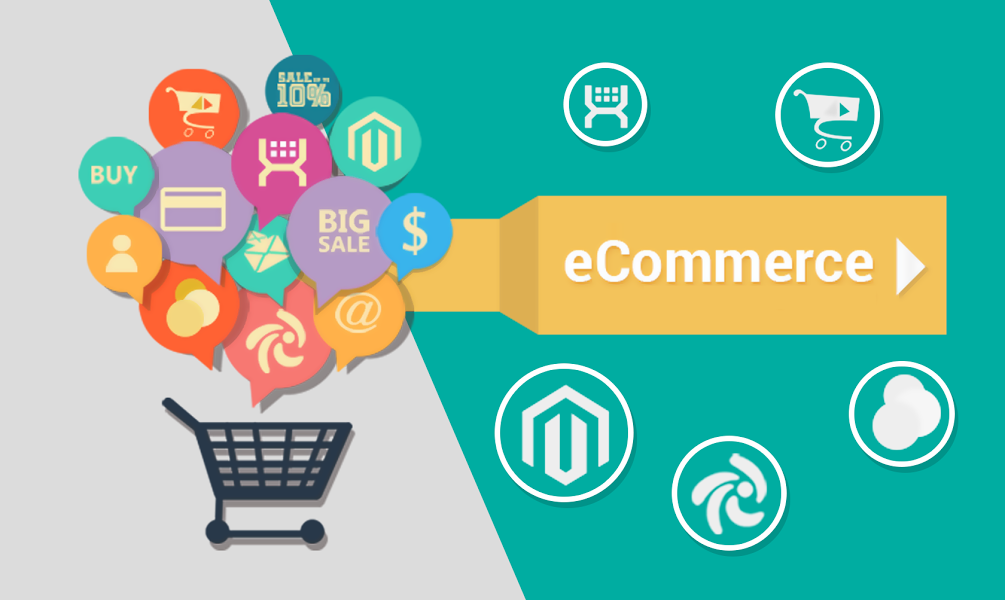The eCommerce business is currently worth $2.3 trillion and is actually set to almost double to 4.48 trillion by 2020. When you are deciding to upgrade your eCommerce software to make sure you are getting probably the largest possible slice of the pie, well, we are delighted to say you are making a brilliant move.
But deciding on probably the best eCommerce software program isn’t as simple as it appears. Actually, it’s clearly one of the most crucial decisions that you make really early on in your eCommerce journey.
To make it easier to determine how to select probably the best eCommerce platform, we have put together this guide that details all the factors and considerations you have to remember.
Why selecting probably the best eCommerce platform matters for your business Building an eCommerce business is actually much more than just simply putting up your product listings on the web. It’s much more complex than you really imagine. Much love running physical retail or a production facility, the same level of strategic thinking and planning also goes into creating and running your eCommerce business.
And in case you get this fundamental spot on, you can take advantage of the digital environment in which you can automate and streamline many of the tasks and activities that would’ve required human intervention.
But when it comes to selecting an eCommerce platform, you’ve to keep in mind that your eCommerce site is going to dictate the following four things:
Click here to get the best B2B Order Management
Growth: How quickly is your business actually able to develop?
Running costs: This includes the cost of building your eCommerce platform and constant growth and maintenance costs.
Customer engagement: How you can control the way your customers interact with the company of yours.
Objectives: The right eCommerce platform will enable you to deliver the service you set out to achieve.
We must mention that many eCommerce vendors tend to focus on “skin” deep issues as design, UX branding, and content. But the real eCommerce issues are actually found within the business process, customer engagement, and lead generation. All of these processes can make it easier to figure out whether you are making a proper ROI on your eCommerce platform.
Why use an eCommerce platform?
To put it simply, if you do not have an eCommerce platform, you can’t compete online. An eCommerce platform is actually the backbone of an online retail enterprise, whether for a B2C or B2B company. Furthermore, the right eCommerce platform can help streamline the way your business interacts with your employees, customers, and clients.
eCommerce platforms are essentially software applications that allow businesses to execute complex functions both in the back-end and front-end. This includes Warehouse fulfillment, web design, mobile commerce, inventory management, and CRM.
Before we actually had specialized eCommerce solutions, businesses had to create their own platform in-house by their IT and development team. This was a costly and laborious affair. These self-built solutions were usually unscalable, difficult to manipulate, and could not incorporate with other software solutions used by the company.
These days, the build-your-own method is actually used by a tiny minority of companies. Still, we now have a range of specialist solutions, including “free” open source platforms which you can pay someone to build to the requirements of yours, a proprietary software program that can also be personalized with a group of developers, existing platforms like Walmart or Amazon in which you register to sell the products of yours, or perhaps ready-made platform as Core DNA that’s hosted in the cloud.
What’s probably the best eCommerce platform?
Selecting an eCommerce platform based on their reputation is not the best way. Actually, the fact is probably the best eCommerce platform is actually the one that successfully delivers the outcomes and objectives that you’ve set for the business.
These objectives can be simple, like an increase in revenue, improving customer engagement, or perhaps creating or entering a new market. Or perhaps they might be complex where you’ve many stakeholders involved that have conflicting objectives. This’s where good leadership is actually necessary to get everybody on the same page; without it, your eCommerce project will struggle to take off.
Furthermore, the right eCommerce platform should fit perfectly with the current technical expertise of the staff. For instance, if you choose an eCommerce platform that is incredibly popular but has a large barrier to entry, this won’t sit well with a team with low technical expertise. With this situation, you will have to draft a technical team to aid you towards your end goal.
Another factor that can determine your choice is your business’s competitive landscape. Suppose you participate in a fast-paced industry, where you are certain to encounter a plethora of technological disruptions. You will need a platform that may move and adjust at the same speed as the company of yours.
Click here to get the best B2B Customer Portal
What exactly are the various kinds of eCommerce platforms?
1. Build your own platforms
While this’s much more of a method than a type of eCommerce platform, it calls for you to contact someone either externally or internally to develop it. As mentioned earlier, this’s less common today. But if your business is very niche and has a certain range of requirements and needs that none of the commercial eCommerce platforms can offer, this might be the only option yours.
2. Traditional platforms
With this particular platform type, you buy a license fee upfront, which you renew annually. Your IT staff and staff will then build and customize on top of the platform and then install it either on-premise or perhaps into the cloud.
3. Open source platforms
Akin to traditional platforms just where you stick to the same development procedure, the primary difference is actually you do not incur an upfront cost in purchasing a license. Nevertheless, you have to pay for initial development, implementation, ongoing development, migration, and upgrades.
4. Cloud platforms
Cloud platforms are a bit murky. Some open and traditional source platforms have bolted onto a hosting system and now call themselves cloud platforms.
5. SaaS platforms
eCommerce platforms that are actually provided as SaaS are usually built on a single codebase. Everyone who utilizes an eCommerce SaaS platform experience the same technology for a fixed monthly fee that covers server use, maintenance, upgrades, and security.
Click here to get the best Sworn Statement BIR Loose Leaf




